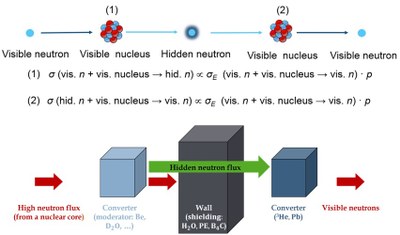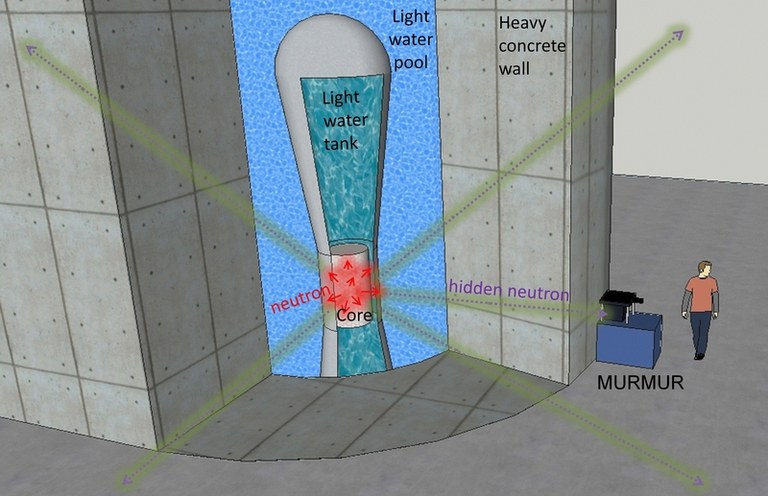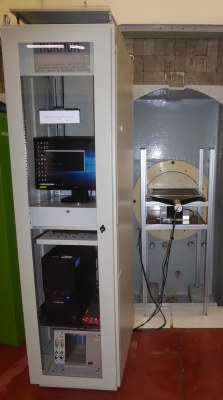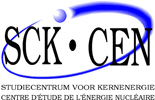The experiment
1) A new configuration based on the use of antenna materials, which enable hidden neutron – visible neutron conversion.


Fundamentally, all materials present such a property as introduced in the previous section. Obviously the efficiency of such a conversion increases with the total cross section of the material. While He-3 absorption cross section in very high, it allows both conversion and absorption.
By contrast some other materials, such as lead, present a high elastic cross section and a very weak absorption cross section. This allows the hidden – visible conversion only, but visible neutrons can be detected in a second step with a conventional detector. The use of such antenna materials presents many advantages.
While He-3 is expensive, it is not the case of lead. Then, it is possible to increase significantly the detector efficiency with a reasonable cost. In addition, making measurements with and without the antenna, both with the reactor off or on, we can extract the neutron contribution induced in the material only when the reactor is running, avoiding then background contributions (internal decays, cosmic rays,…).
2) The use of various antenna materials (lead, aluminum, graphite) with different efficiencies in order to get a better discrimination with other signals (such as thermal neutrons induced by thermalization of fast neutrons from the reactor through the antenna or neutrons produced through neutrino capture in the antenna).


3) An improved detector using an active discrimination to reject alpha internal background or fallacious gamma. Analysis of the electronic signals from the He-3 detector can allow discriminating real neutron signal from internal alpha or gamma.
4) A low noise environment. The surrounding of the ILL reactor presented an activity about 60 c/s, by contrast, the BR2 reactor of SCK·CEN presents an ambient noise which could be lower by one or two orders of magnitude.
5) A long-term experiment with on/off measurements to discriminate effects related to the reactor from the other unwanted ones. The BR2 reactor does not present strong time constraints due to its usual use (material irradiation) by contrast with our experiment which is a passive one.






